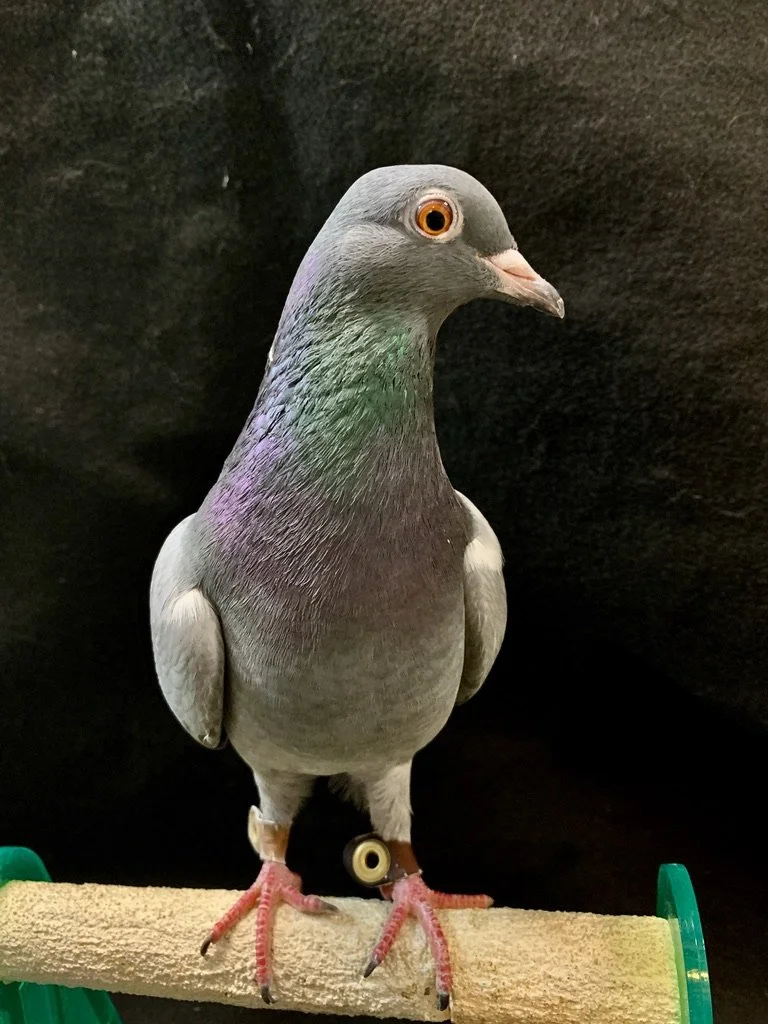Rock Pigeons: An Educational Overview of an Often-Overlooked Urban Bird
Post Author: Kyla Atkinson
Rock Pigeons are among the most familiar birds in the world, commonly seen weaving through busy streets, gathering on rooftops, and raising families in the smallest urban corners. While they’re often associated with energetic behavior and messy nesting habits, pigeons have an impressive history and play a meaningful role in the environments they share with us.
Pigeons have existed for 23–34 million years, making them one of the oldest surviving bird lineages. They were also the first bird domesticated by humans. Ancient Egyptians kept them for food and companionship, and as civilizations traded and traveled, pigeons followed. Originally native to Europe, they are now found worldwide, thriving especially in cities.
Before modern communication, pigeons were famous for their work as messenger birds. Their ability to navigate home from up to 1,300 miles away made them invaluable for delivering information across long distances. They were used as far back as Ancient Egypt and played crucial roles in wartime, carrying letters and strategic messages that humans could not safely transport. Their speed and reliability made them one of the earliest long-distance communication systems.
In today’s urban landscapes, pigeons continue to contribute quietly but significantly. They are generalist feeders, consuming seeds, grains, greens, insects, and a variety of human food waste. By eating organic debris and pests, pigeons help maintain a cleaner and more balanced city environment, even if their efforts often go unnoticed.
Pigeon behavior is equally fascinating. These birds are monogamous, forming strong pair bonds that usually last for life. Their courtship includes soft cooing, bowing, feather grooming, and food sharing—behaviors that strengthen their partnership. Once bonded, both parents share responsibilities. The male selects the nesting site and gathers materials; the female constructs the nest; and both take turns incubating the eggs. Pigeons typically lay two eggs per clutch and can raise multiple broods per year. Pigeons are famous for their… minimalist designs. Their nests can be: a few sticks. some straw, a single leaf, or a mess they’ve built up for years until it becomes a feathery skyscraper. They’ll nest anywhere: window ledges, bridges, sidewalk cracks, abandoned shoes—you name it, they’ve considered raising a family in it.
Here at Echoes of Nature Pidge is one of our educational ambassadors. She came to us from Second Chance Wildlife Center in 2019 and has been a part of the family ever since! She is energetic, loves a good bath and bonds well with all the volunteers and staff here at the center. If you would like to meet Pidge, please reach out to find out which program she is a part of!
Pigeons may seem ordinary, but their resilience, loyalty, and long history alongside humans make them an extraordinary part of our everyday environment.

